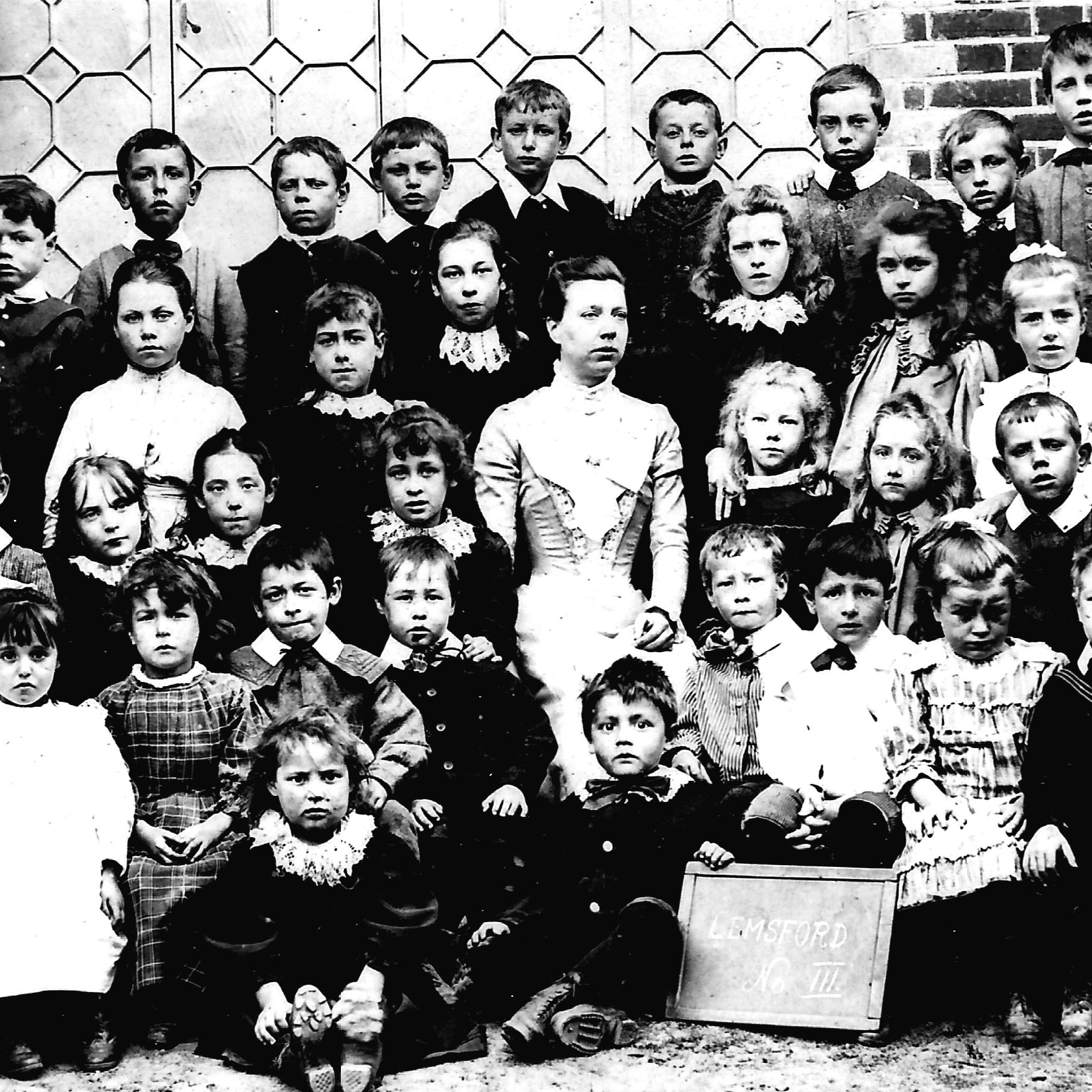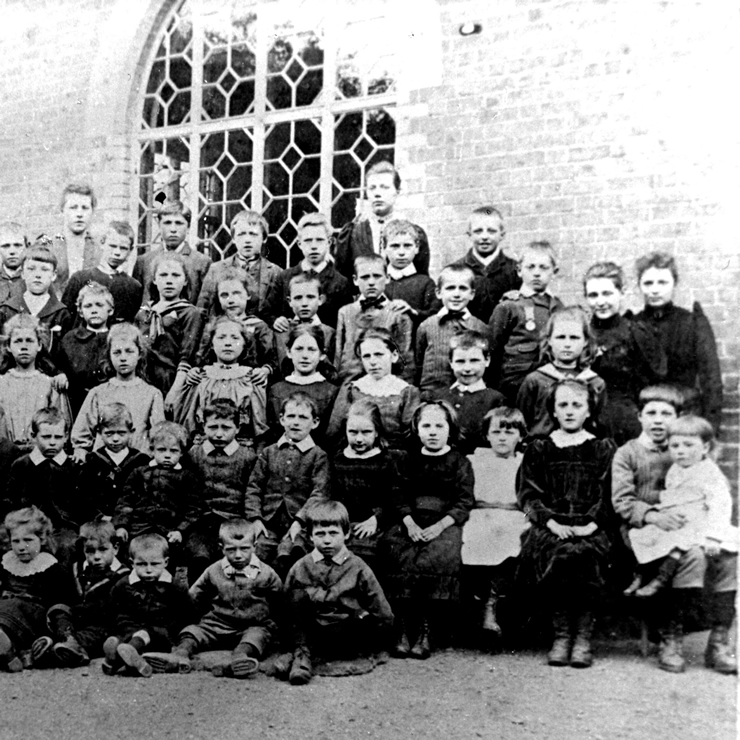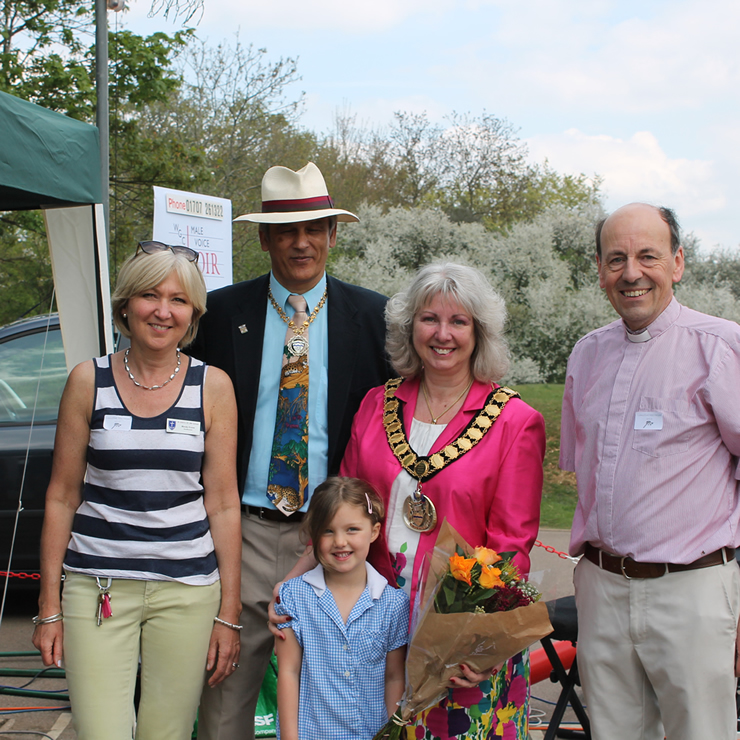TL2020
The Education Act of 1870 required provision be made for all children to have the opportunity for an education. Prior to this date few children, other than those from wealthy families, were able to attend any type of school. On the 4th March 1872, the first entry in the Head Teacher’s Log Book was made by Mrs Mary Seaman, the first Head Teacher. On that day, seventy-seven children, ranging in age from three to thirteen, were enrolled. They were divided into two classes - one being taken by Mrs Seaman and the other by her husband Walter, her assistant. They were all taught in one room, the room now used as the dining room in the oldest part of the school. The school was approved by the Government on the 16th May 1872.
This page examines the life of Arthur (pop) Freeman. Admission Number:847
Arthur (pop) Freeman attended St Johns from Nov 25 1902 to Oct 20th 1906
Date of Birth: Nov 13 1895. Parents: Alfred
Lived at Stanborough Farm
Left St John’s and went to Hatfield Hyde School
Arthur lived at Number 5 Bury Cottages
1922: Arthur Ernest Freeman (1895 – January 3rd 1996), wife Margaret Elizabeth
( 1899 - June 14th 1981 1901Census: Gardener
Previous Address: Stanborough Farm
War record: Sergeant 38476, 162nd Siege Battery, Royal Garrison Artillery
.
The memories of Pop Freeman who lived at Number 5 by Bill Bates
Number 5 Bury Cottages Though Arthur Freeman who lived at number 5 for 60 years, he was not born in Stanborough, his family moved to a farm (where the sailing lake car park stands) around the turn of the century, where his farther was the manager. Life was tough for a young Arthur who, being the eldest, received regular beatings from his father. He attended St. John’s school up until the age of 12, when after suffering blackouts he went out to work. One of his first jobs was with the gardeners for Lord Mount-Stevens on the Brocket estate and as a hand on the Farm where they lived. One of his regular jobs was to walk livestock to St Albans market every Wednesday, he would say that the first house you would come to in St Albans in those days was the Jolly Sailor Public house. At the age of 15, to escape the tough life at home, Arthur walked to Hertford to enlist into the Army. He lied about his age as minimum age at the time was 16. But he was given a bed for the night and a pen and paper to write to tell his parents where he was.? Arthur loved army life; he was in South Africa on the day the First World War was declared. He recalls that there was a German ship in the harbour of the town where he was stationed at the time. The ship was given time to leave and 24 hour lead before the Royal Navy gave chase (how things would change).? On returning to the UK, the intrepid Arthur went to Wales for Artillery training. During this training an accident happened that caused
several charges to explode, the injuries that Arthur sustained affected his hearing for the rest of his life. In France Arthur was a sergeant in the 162 Siege battery as well as being a first class signaller.? It was this secondary role that was sure to save his life. He shared the role of signalling reports from the front line back to the Battery with another chap, who on one night did not “fancy” taking his turn up the front (possibly due to poor weather) so Arthur duly went, with the help of a “young lad”(who tended to be older than Arthur as he was only around twenty years old). While away the Germans pinpointed Arthur’s Battery and shelled it. They hit the bunker where the Gun crews were sheltering killing all but one person, who was out of the shelter looking for souvenirs at the time. Arthur was gassed, and sustained several shrapnel wounds and saw action at many of the major battles including the Somme, and lost at least one brother in action. Arthur met his “Old Trouble”, (his term) for his wife to be, in London just before he was due to leave the army and was married within a few months (unfortunately the marriage only lasted 62 years). They moved back to Stanborough and rented a room at Bury Farm. A Mr Arthur Freeman and his wife originally moved into No 5 (possibly the first house completed).
When the Second World War rolled along Arthur was to old for active service and also his daytime job and attachment to the St Johns Ambulance Service in Hatfield were deemed important to the war effort. Rooms were rented out in the house at the time and also the house was regularly attended on a Saturday night by the girls from an AA Battery stationed where the police head quarters are now, for a dance in the front room. While in the House Arthur had two main jobs; one was Digging the clay at the Brick Fields where the Gosling stadium now stands and the other at ICI, where he worked until his early seventies. “Art” was a great fellow even well into his nineties he still had the energy to maintain a fabulous flower garden to the front of the house and a fully stocked vegetable garden at the back. Arthur had two children June and Richard, June must have caused some controversy when just after the war she courted and married Ivan Lust a German sailor, who was a POW from the camp near Lemsford Church. Ivan was one of the few survivors of the Bismarck and after a frosty start with Art and a shotgun, he went on to be the “best son-in-law a man could want”. June and Ivan became close associates with Lord Mountbatten of Burma through the North Atlantic Star Association.
Late in his life Art achieved every working man's dream of being allowed free beer in all McMullen's pubs and even had a 100th Birthday celebration lunch at the brewery (filmed and shown on that nights local news).
Arthur lived in the house for around 75 years. When things were getting too much he moved to his daughters around 1995 The above memories of Pop Freeman was kindly written by Bill Bates. William, as he is known to the older residents of the cottages, lived at number 6. He was born in 1969, the only son of Bill and Sylvia Bates who moved into No 6 in 1965. He was very close to Pop and spent many hours in his company.
St Johns School Lemsford Info

Lemsford Local History group have decided to dedicate 2022 to working with St John’s School to celebrate the school’s 150-year anniversary. This website is also dedicated to this special year. On the 4th of March 1872, the first entry in the Head Teacher’s Log Book was made by Mrs Mary Seaman, first Head Teacher. On that day, seventy-seven children, ranging in age from three to thirteen, were enrolled. They were divided into two classes - one being taken by Mrs Seaman and the other by her husband Walter, her assistant. They were all taught in one room, the room now used as the dining room in the oldest part of the school. The school was approved by the Government on the 16th of May 1872. We hope the school, local community, and anyone with an interest in St Johns school will Contribute Articles, memories, and images to this Website. Email info@lemsfordhistory.co.uk
- St Johns School index page- Learn More
- Johns School Time Line - Learn More
- St Johns School Articles - Learn More
- St Johns School Class Photos - Learn More
- St Johns School Head Teachers - Learn More
- St Johns School Gallery - Click Here - Learn More




